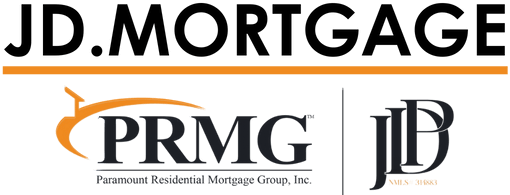Mortgage Discount Points Explained
Mortgage Discount Points Explained: How to Calculate, Compare, and Decide If They’re Worth It
Mortgage discount points can be a smart way to lower your interest rate, but only if you understand how they work and when they pay off. Buyers and sellers alike often mix them up with lender fees or think they always make sense. The truth is more nuanced: discount points are optional, negotiable, and entirely about math and timing. The JD.Mortgage team at PRMG helps homeowners and real estate agents understand the difference between buyer-paid and seller-paid points, how break-even calculations work, and why these choices matter more in 2025’s rate environment. Ask us to run your scenario.
Explore Loan Options (Dec 7th, 2025)What Are Mortgage Discount Points?
Discount points are prepaid interest that you pay at closing to get a lower rate on your mortgage. One point equals 1% of the loan amount. Paying a point up front can reduce your rate for the life of the loan, while skipping points keeps more cash in your pocket now. Each lender’s pricing grid is slightly different, so the effect of one point may vary from one program to another. Run sample payments.
Buyer-Paid vs. Seller-Paid Points
Either party can pay discount points. Buyers sometimes pay them to secure a lower rate long-term. Sellers may offer to pay them as part of a negotiated incentive to help the buyer qualify or lower the payment. For VA loans, customary discount points that align with market conditions do not count toward the 4% seller-concession cap. That means a seller can still help reduce the buyer’s rate without eating into the allowance used for closing costs, prepaid items, or debt payoff. We’ll structure the contract so everything complies with VA, FHA, and agency guidelines. See VA loan basics.
How to Calculate the Cost of Points
The math is straightforward. One point equals 1% of the loan amount. For a $400,000 loan, one point costs $4,000. Whether that point is “worth it” depends on how much your monthly payment drops and how long you plan to keep the loan. Estimate your payment.
Explore Loan Options (Dec 7th, 2025)The Break-Even Rule
The break-even point tells you when the upfront cost of discount points has paid for itself through monthly savings. Divide the total cost of the points by the monthly savings. For example, if paying $4,000 saves you $100 a month, your break-even is 40 months. Stay in the home or keep the loan longer than that and the savings stack up; sell or refinance sooner and you likely lost money. Ask us to calculate your break-even.
How Many Points Can You Buy?
Most lenders allow anywhere from 0 to 3 discount points. Each point has a diminishing effect—your first point may lower the rate by 0.25%–0.375%, while the second may have a smaller impact. Buying beyond two points rarely pays off unless rates are volatile and you plan to hold the loan for many years. Compare loan programs.
Buyer Strategies for 2025
In today’s market, points are often used creatively. Buyers combine partial seller concessions with their own funds to reduce monthly payments. Builders may also contribute toward points on new homes. Since market pricing adjusts daily, locking the loan at the right time matters as much as how many points you choose. The JD.Mortgage team monitors live rate movements so you can lock confidently. Ask about rate-lock timing.
Explore Loan Options (Dec 7th, 2025)What About Temporary Buydowns?
A temporary buydown—like 2-1 or 1-0—uses funds to lower payments for the first one or two years. This is different from discount points. Buydowns are temporary; discount points are permanent. Both can be seller- or builder-funded, but only the permanent discount points are considered interest-rate adjustments, not part of VA’s 4% concession cap when they’re customary. We’ll explain the math for each so you can decide which gives the best long-term value. See other rate-reduction options.
Common Myths About Discount Points
- Myth 1: Points always save you money. → Not true; if you sell or refinance early, you might never reach break-even.
- Myth 2: Points and origination fees are the same. → They’re not; origination covers lender processing, not rate reduction.
- Myth 3: VA loans can’t have seller-paid points. → They can—as long as the points are customary to the market and properly documented.
- Myth 4: Points always mean “better deal.” → Sometimes a slightly higher rate with lender credit fits your goals better.
FAQs About Mortgage Discount Points
How much does one discount point lower my rate?
Usually between 0.25% and 0.375%, though it depends on program and market pricing. Ask for a quote.
Can sellers pay discount points for buyers?
Yes. Seller-paid discount points are allowed on VA, FHA, and Conventional loans. For VA, customary discount points do not count toward the 4% concession cap. Read VA guidelines.
Explore Loan Options (Dec 7th, 2025)Do discount points affect taxes?
Often yes, but tax treatment varies by scenario. Consult a tax professional for confirmation. Ask us for lender documentation.
Can I roll discount points into the loan?
Sometimes. For purchases, they’re usually paid at closing. For refinances, they can be financed. See refinance options.
Are discount points worth it in 2025?
If you’ll keep the home or loan beyond the break-even period, yes. If you’ll move or refinance sooner, saving the cash may be smarter. Run a side-by-side.
What This Means for You
Discount points can be a powerful tool when used strategically, especially in a market where rates shift daily. The key is understanding the math, the timing, and who pays for what. Whether you’re buying, refinancing, or helping a client negotiate seller-paid points, we’ll help you build the clean numbers and compare real savings before you lock anything in. Back to top.
Learn More About VA Loans (Dec 7th, 2025)

Comments open